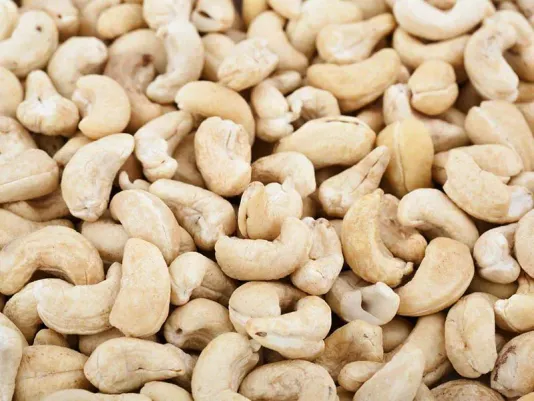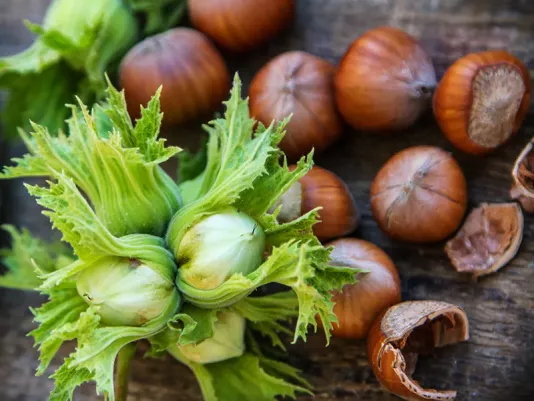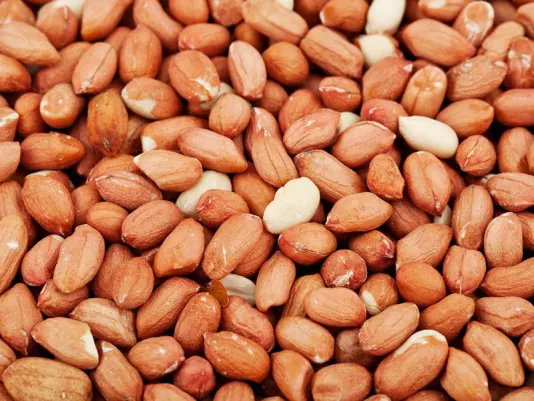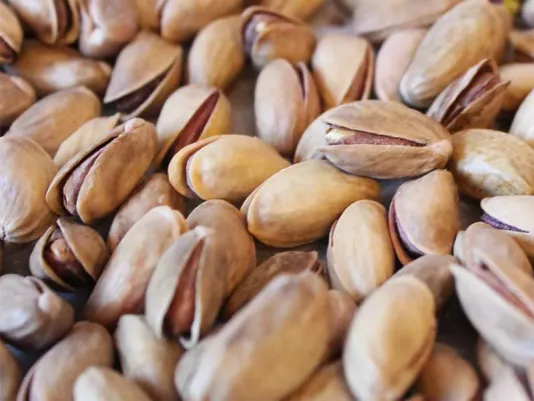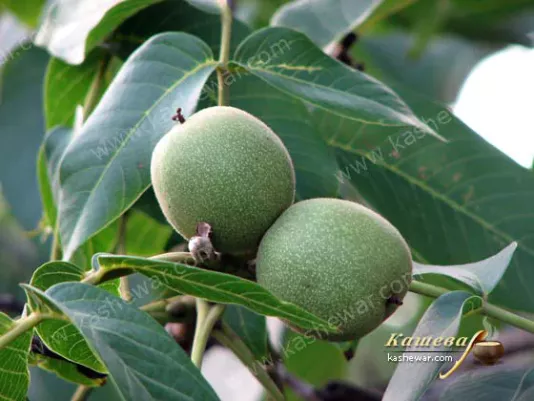Nuts
Nuts are one of those ingredients that always inspire me to new culinary experiments. I cook dozens of different dishes with them, and each time the result turns out special. In my everyday menu, nuts help diversify nutrition since they provide the body with healthy fats, proteins, vitamins, and minerals. For me, it is important that nuts combine simplicity and sophistication: you can add them to a simple salad to make it more nutritious or use them in desserts to highlight the taste of chocolate or fruit. When I choose nuts, I always pay attention to their quality and freshness, as this determines whether the dish will be truly delicious. I have learned to store nuts properly – in tightly closed containers and in a cool place so that they retain their flavor. Nuts help me create dishes for any occasion: light snacks, nourishing salads, festive desserts. They always become the accent that transforms a simple recipe into a true culinary discovery, which is why I return to them so often in my daily practice.
Different Types of Nuts
Walnuts in Cooking
Walnuts hold a special place for me because it was with them that I first began experimenting in the kitchen. Their rich, slightly tangy flavor I consider unique, as it can complement both sweet and savory dishes. When I make salads, I often add chopped walnuts to a mix of fresh vegetables, cheese, or even fruit. They add extra texture, make the dish more nutritious, and give it an interesting taste. In baking, walnuts provide a deep aroma: I add them to pie dough, sprinkle them on rolls, or mix them with honey in fillings. They are so versatile that they easily fit into both traditional recipes and modern culinary experiments. I especially value them in sauces – for example, when I mix walnuts with herbs, garlic, and oil, I get a rich dressing for meat or vegetables. I have learned to always toast the kernels in a dry pan: they become more aromatic and keep their natural benefits. At the same time, I pay attention to quality – I choose only those that have no dark spots or bitter smell. Thanks to these simple rules, dishes with walnuts always turn out successful. I even use them as a snack when I don’t have time for a full meal: a few nuts give me energy and satisfy hunger well. Walnuts for me are not only a tasty ingredient but also a true source of inspiration in cooking. Whatever I prepare, adding these nuts always makes the dish more expressive and complete.
Almonds and Their Culinary Possibilities
I have loved almonds since childhood, and today they are one of the most frequent ingredients in my kitchen. I use them in various forms: whole, sliced into flakes, ground into flour, or blended into paste. In baking, almonds are simply indispensable – they give the dough tenderness and the taste refinement. I often add almonds to cupcakes, pastries, cookies, and it is the almonds that create the characteristic aroma that is instantly recognizable. In addition, I make homemade almond milk, which is great for porridges, coffee, or sauces. This milk has a light sweet aftertaste and is an excellent alternative for those who do not consume regular milk. Almond paste for me is a real find: it makes desserts more nutritious and helps diversify the daily menu. But almonds are not limited to sweet dishes: I add them to salads, pair them with chicken or fish, and use them in sauces to give them a creamy texture and nutty flavor. I also love using almond flakes for breading: the dish comes out with a golden crust and a light aroma. Before cooking, I always soak almonds in water so that they peel better and reveal their flavor. I am sure that almonds make any cuisine richer: their versatility allows endless experimentation, and each new recipe with them becomes another of my culinary victories.
Hazelnuts in Desserts and Snacks
Hazelnuts have always been for me a symbol of refined taste, especially in desserts. I consider their combination with chocolate perfect, so I often use hazelnuts in cakes, candies, and cookies. When I prepare homemade pastries or rolls, I always add chopped hazelnuts to creams or sprinkle them on top of baked goods – they give dishes a unique texture and aroma. However, I don’t limit myself to sweets: hazelnuts also work great in snacks. For example, I make a paste from cheese and chopped hazelnuts, which is easy to spread on bread or serve with vegetables – such a dish always pleases my guests. I also have another habit: before using, I always toast hazelnuts in a dry pan to enhance their aroma and make the flavor richer. Sometimes I use whole nuts as a snack or add them to yogurt and porridge for extra nutrition. Hazelnuts for me are a universal nut that not only decorates desserts but can also make any snack more interesting. Their delicate, slightly sweet taste adds harmony to dishes, and their nutritional properties make them even more valuable. I am convinced that hazelnuts are the ingredient you should always have on hand, as they open up many possibilities for culinary creativity and never disappoint.
Cashews and Peanuts in Everyday Meals
I discovered cashews not so long ago, but now they are a constant presence in my kitchen. Their delicate and mild taste allows me to make light sauces for vegetables or pasta, prepare creams for desserts, or even replace dairy products in vegetarian dishes. When I soak cashews in water and blend them, I get a creamy base that can be used as a salad dressing or as a sauce for hot dishes. This is truly a universal ingredient. I value peanuts for their affordability and wide range of uses. They pair wonderfully with vegetables in Asian dishes: fried peanuts with noodles or vegetables always turn out bright and nutritious. I often add them to homemade sauces, for example, peanut sauce for chicken or vegetables, and the taste becomes completely new. In addition, peanut butter for me is the perfect option for a quick breakfast or snack that the whole family enjoys. I always try to roast peanuts to bring out their aroma and store them in airtight containers so that they keep their freshness. I use cashews and peanuts in salads, baked goods, and even sauces, as they add new flavor notes and make the menu more varied. For me, these nuts have become indispensable because they always help diversify everyday meals.
How to Choose and Store Nuts
When I buy nuts, I always pay attention to their appearance and smell, as this determines the quality of future dishes. I never take nuts with dark spots, cracks, or unpleasant odors, as they may be spoiled and ruin the taste of the dish. The most reliable option is nuts in their shells: they keep fresh longer and are better protected from moisture or foreign smells. If I choose shelled nuts, I always check that they are whole and dry. For storage, I use glass or metal jars with tight lids to prevent air from getting in. I also keep nuts away from spices and foods with strong aromas, as they easily absorb smells. For longer storage, I always put them in the refrigerator and sometimes even freeze them: this way, they can stay fresh for several months. Before using, I often warm nuts in a dry pan or oven to restore their aroma and make the taste more expressive. Such simple steps allow me to always have quality and tasty nuts on hand for any recipe. I have found that proper storage is the key to ensuring my salads, desserts, or sauces always turn out just as I intended. For me, nuts are not just an ingredient but a real treasure that requires careful handling so that at any moment I can create a new delicious dish.

